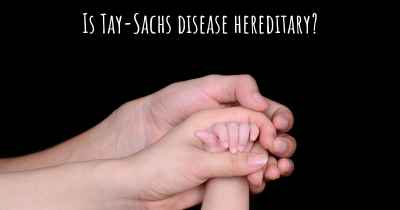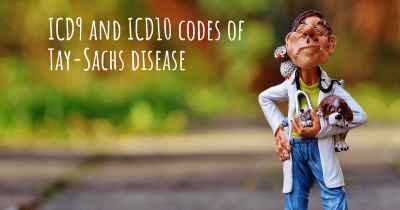Which are the symptoms of Tay-Sachs disease?
See the worst symptoms of affected by Tay-Sachs disease here

Symptoms of Tay-Sachs Disease
Tay-Sachs disease is a rare genetic disorder that primarily affects the nervous system. It is caused by a deficiency of an enzyme called hexosaminidase A (Hex-A), which leads to the accumulation of a fatty substance called GM2 ganglioside in the nerve cells of the brain and spinal cord. This buildup progressively damages the cells, resulting in the characteristic symptoms of the disease.
Infantile Tay-Sachs Disease:
The most common and severe form of Tay-Sachs disease is infantile Tay-Sachs. Infants with this form of the disease appear normal at birth, but symptoms typically start to manifest around 3 to 6 months of age. These symptoms gradually worsen over time and usually lead to death by the age of 4.
Motor Skills:
One of the earliest signs of infantile Tay-Sachs disease is a delay in motor skills development. Affected infants may have difficulty rolling over, sitting up, crawling, or walking. They may also experience muscle weakness and poor muscle tone (hypotonia), making it challenging for them to control their movements.
Developmental Regression:
As the disease progresses, infants with Tay-Sachs experience a significant regression in their development. They may lose previously acquired skills, such as the ability to babble, make eye contact, or respond to their surroundings. This developmental regression is a hallmark feature of the disease.
Seizures:
Seizures are a common symptom of Tay-Sachs disease. Infants may experience various types of seizures, including generalized tonic-clonic seizures (formerly known as grand mal seizures) and myoclonic seizures (brief, jerking movements of the limbs). Seizures can be severe and difficult to control, further impacting the child's overall health and development.
Progressive Vision and Hearing Loss:
Another significant symptom of Tay-Sachs disease is the progressive loss of vision and hearing. Infants may initially have normal vision and hearing, but as the disease advances, they may develop an exaggerated startle response to loud noises and gradually lose their ability to see and hear. This sensory impairment further contributes to the overall decline in their quality of life.
Enlarged Head:
Infants with Tay-Sachs disease often develop an abnormally enlarged head, a condition known as macrocephaly. This enlargement is primarily due to the accumulation of GM2 ganglioside in the brain, causing the brain and skull to grow at an abnormal rate. Macrocephaly is a characteristic feature of the disease and can be observed during physical examinations.
Swallowing and Feeding Difficulties:
Tay-Sachs disease can also affect the ability to swallow and feed. Infants may have difficulty coordinating their sucking and swallowing reflexes, leading to feeding difficulties and poor weight gain. As the disease progresses, swallowing becomes increasingly challenging, and the risk of aspiration (inhaling food or liquid into the lungs) increases.
Respiratory Problems:
As the disease advances, respiratory problems become more prominent. Infants with Tay-Sachs disease may experience frequent respiratory infections, breathing difficulties, and a weakened respiratory system. These complications can be life-threatening and often contribute to the shortened lifespan of individuals with the disease.
Other Symptoms:
In addition to the key symptoms mentioned above, Tay-Sachs disease may also present with other signs and symptoms, including muscle stiffness (spasticity), irritability, decreased muscle strength, loss of appetite, and an exaggerated startle response. These symptoms can vary in severity among affected individuals.
Conclusion:
Tay-Sachs disease is a devastating genetic disorder that primarily affects the nervous system. The symptoms of this rare disease typically appear in infancy and progressively worsen over time. Early signs include motor skills delay, developmental regression, seizures, progressive vision and hearing loss, enlarged head, swallowing and feeding difficulties, respiratory problems, and other associated symptoms. It is crucial to recognize these symptoms early on to provide appropriate medical care and support for affected individuals and their families.








